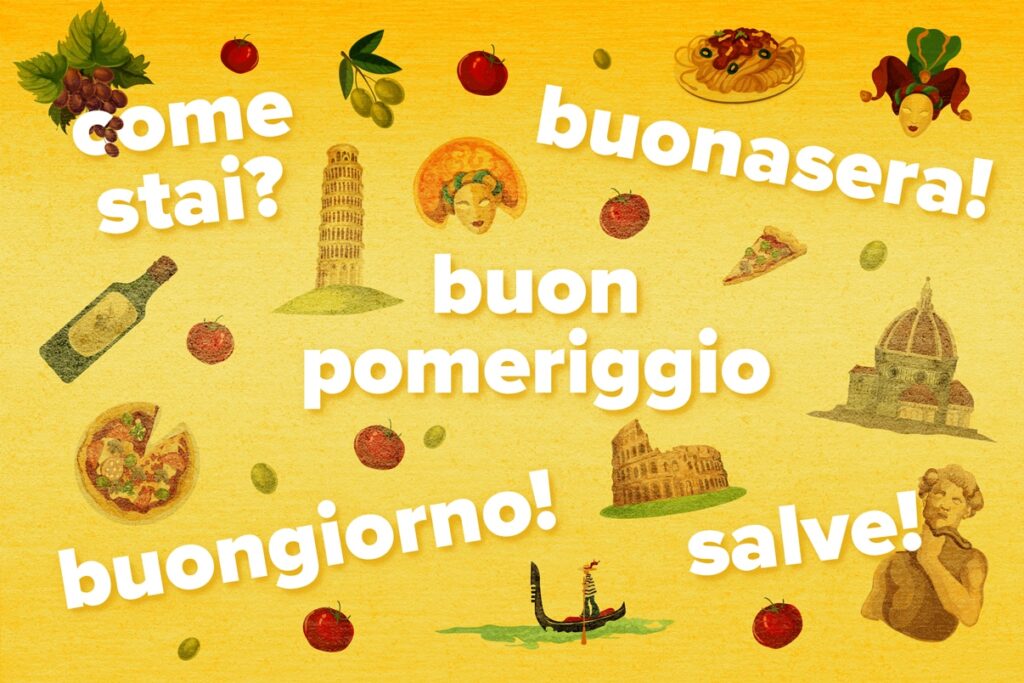
Hello in Italian: 60+ Italian Greetings
“Hello” is one of the most important words to learn in any language and often the first word used in any situation, from informal to formal encounters.
However, like in English, there are many different ways to say “hello” in Italian, depending on factors such as the time of day and levels of formality.
In this post, we’ll share 60+ Italian greetings, so you’ll know how to say “hello” and “how are you?” in any situation!
Contents
- How to Say “Hello” in Italian
- Time-specific Italian Greetings
- How to Say “How Are You?” in Italian
- Specific and Seasonal Italian Greetings
- Other Helpful Words and Phrases
- Why Learn Italian Greetings?
- And One More Thing...
Download: This blog post is available as a convenient and portable PDF that you can take anywhere. Click here to get a copy. (Download)
How to Say “Hello” in Italian
Ciao
This one doubles as both “hello” and “goodbye,” and you’re probably already familiar with it.
The origins of ciao are found in the Venetian dialect, deriving from s-ciao or s-ciavo (I am your slave). It directly references the Italian word for slave, schiavo . When used in vèneto, this turn of phrase typically has the connotation of “I’m here if you need me!”
Ciao is primarily considered highly informal. In everyday conversation, it’s often used among people who are already close. So if you’re in Italy and conversing with a native speaker, don’t consider it the go-to greeting. Due to the level of informality, you won’t want to use this in situations that require any kind of formality.
Salve
Italian, like many languages, has strong notions of “formal” and “informal” that go back to cultural standards. Salve, however, is interesting in that it can be considered both polite and informal, depending on the context of the conversation in which it’s being used.
Salve is a good choice for when you’re not sure what level of formality to use. It does lean toward more formal, so don’t be surprised if someone you’ve known for years doesn’t use it with you.
Weilà
This slang phrase is a casual greeting that doesn’t quite have a direct translation in English. It’s used in a similar way to “Hey there” in English, and you’ll mostly hear it among younger people as a greeting for friends they know very well.
Ehi / Ehilà
While ciao might be one of the most popular ways of saying “hello” in Italian in many situations, you may also hear an Italian say ehi, ehilà or even see ehi in a text. These are all used to say “hey” and their meaning may vary depending on the tone used by the speaker.
As well as sometimes being used as an informal “hey,” these words are commonly used in Italian to attract someone’s attention, like in English.
For example, you might bump into someone you know in an unexpected place:
Ehi, Antonio! Cosa stai fai qui?
(Hey, Antonio! What are you doing here?)
Pronto
This phrase, which literally means “ready,” is used for answering the phone in Italian.
It supposedly dates back to when phone calls were placed through human operators. Once the operator connected the caller to the recipient, the recipient would say Pronto (and likely their name as well), to indicate that they were on the line and “ready” to talk.
Now pronto is commonly used as a greeting when answering the phone:
Pronto, chi parla?
(Hello, who’s speaking?)
It can also be combined with another greeting when you answer the phone to say something like, “Hello, good morning!”
Pronto, buongiorno!
(Hello, good morning!)
More Ways to Say Hello in Italian
Want even more? Here’s a list of ways to say hi in Italian:
- Salve a tutti (formal) — Hello, everyone
- Salve a tutti quanti (formal) — Hello to everyone
- Salve a voi tutti (formal) — Greetings to all of you
- Salve signore / signora (formal) — Hello sir/madam
- Salve a voi (formal) — Greetings to you
- Ciao a tutti (informal) — Hi, everyone
- Ciao bella (informal) — Hello beautiful
- Ciao bello (informal) — Hello handsome
- Ciao amico / amica (informal) — Hello friend
- Ciao caro / cara (informal) — Hello dear
- Ciao, tutto bene? (informal) — Hi, everything okay?
- Ciao ragazzi (informal) — Hi guys
- Cià (informal, slang) — Hi
- Saluti (formal) — Greetings
- Salutoni (informal) — Big hello
- Eccomi (informal) — Here I am
Time-specific Italian Greetings
Buongiorno — Good Day
Literally translated, this means “good day,” but this is also a pretty standard way of saying “good morning.” It can be used for greeting people until the early hours of the afternoon. It also doubles as a catch-all way of saying “hello,” but only in the morning and early afternoon.
It tends to run a bit on the formal side, but it’s generally accepted in all social circles.
‘Giorno — Mornin’
As you may have guessed, this is the abbreviated form of the typical “good morning” phrase above.
You can use it as a more casual greeting to essentially say, “Mornin’!”
Buon dì — Good Day
The phrase is a combination of the word “good” (buon) and an old, Latin-based form of the word “morning” (dì). It’s not as commonly heard and is mostly used informally.
Buon pomeriggio! — Good Afternoon
Buon pomeriggio is a standard way of saying “good afternoon” across all levels of formality once it starts to get well past the morning.
Buonasera! — Good Evening
Buonasera literally translates to “good evening” and that’s exactly what it means. Use this during that time of day between afternoon and night when people are getting out of work, school, etc.
More Time-specific Italian Greetings
Here are a few more, mostly informal ways to say hello at different times of day:
- Buon riposo! (formal and informal) — Rest well!
- Buona serata! (informal) — Have a good evening!
- Buonanotte! (informal) — Goodnight!
- Buongiornissimo! (informal) — Super good morning!
- Bel pomeriggio! (informal) — What a nice afternoon!
- Ehi, buonasera! (informal) — Hey, good evening!
How to Say “How Are You?” in Italian
Once you’re past the “hello,” keep the conversation going with small talk. Ask whoever you’re talking to how they’re doing!
- Come sta? (formal) — How are you?
- Come sta lei? (formal) — How are you?
- Come va? (formal) — How is it going?
- Come si trova? (formal) — How are you finding things?
- Come si sente? (formal) — How are you feeling?
- Come stai? (informal) — How are you?
- Come ti trovi? (informal) — How are you finding things?
- Come ti senti? (informal) — How are you feeling?
- Tutto bene? (informal) — Is everything okay?
Specific and Seasonal Italian Greetings
How do you greet someone who’s enjoying their meal? What do you say when you pick up the phone? And how do you wish someone a happy new year? Here are some context-specific Italian greetings to know:
- Benvenuto / Benvenuta! — Welcome! (Used when entering or arriving someplace)
- Buon pranzo! — Enjoy your lunch!
- Buon appetito! — Enjoy your meal!
- Pronto? — Hello? (Used when answering the phone—see the entry earlier in this post for its origin!)
- Auguri! — Best wishes! / Congratulations!
- Buon Natale! — Merry Christmas!
- Felice Anno Nuovo! — Happy New Year!
- Buona Pasqua! — Happy Easter!
- Buona Festa della Mamma! — Happy Mother’s Day!
- Buona Festa del Papà! — Happy Father’s Day!
- Buon San Valentino! — Happy Valentine’s Day!
- Buon Halloween! — Happy Halloween!
- Buon Ferragosto! —Happy Ferragosto! (a holiday in Italy, held in August)
- Buon anno! — Happy New Year’s Eve!
- Buon Compleanno! — Happy Birthday!
Other Helpful Words and Phrases
Piacere di conoscerti! — Nice to Meet You
If this feels a bit too formal, it’s perfectly acceptable to say “Piacere!” (Pleasure!).
Mi chiamo… — My name is…
When you meet a person for the first time, the most important thing to share is your name. Introduce yourself with this simple phrase.
If you want to ask a person their name, there are two main options, depending on the level or formality:
Come ti chiami? — What’s your name? (Informal)
Come si chiama? — What’s your name? (Formal)
Sono di… / Vengo da… — I’m from…
Letting someone know you’re a visitor or that you relocated from somewhere else is a good ice-breaker.
Just insert where you’re from in English to get the conversation moving. For example, “Vengo dalla California” (I’m from California) works just fine!
Buonanotte! — Good Night
In Italian, when you or another person is ready to go to bed, you can say buonanotte (good night). This phrase can be used in both formal and informal situations, like “good night” in English.
For more phrases to say “good night” in Italian, plus extra Italian sleep vocabulary with audio pronunciation, take a look at this post:
7 Ways to Say Good Night in Italian | FluentU Italian Blog
Learn how to say “good night” in Italian in seven different ways! Plus, discover exactly when you should say the phrases and what type of formality you need to use. Read…
Arrivederci! — Goodbye
As with greetings in Italian, there’s also a variety of different words and expressions to say goodbye such as arrivederci and ciao.
This post has more ways to say goodbye in Italian:
How to Say Goodbye in Italian: 50+ Phrases | FluentU Italian Blog
Find out how to say goodbye in Italian. From “ciao” to “ci vediamo,” we’ll teach you how to say goodbye in Italian in any situation. Whether you’re heading home from the…
Why Learn Italian Greetings?
Greetings are an essential part of any language. Not only do they help you make a good impression when meeting someone new for the first time, but also when speaking to someone you are familiar with.
Sure, saying “hi” is as easy as a wave and a smile—but to start a conversation the right way, it’s important to know what to say and when, and greetings are the key to this.
A warm, appropriate introduction can make all the difference when chatting in Italian, especially when you’re focusing on what’s formal versus what’s casual.
Being mindful of these important differences shows respect for the person you’re talking to.
For additional context, try diving into an Italian TV series or using a language learning program, like FluentU.
FluentU takes authentic videos—like music videos, movie trailers, news and inspiring talks—and turns them into personalized language learning lessons.
You can try FluentU for free for 2 weeks. Check out the website or download the iOS app or Android app.
P.S. Click here to take advantage of our current sale! (Expires at the end of this month.)
As you can see, there are many different ways to say “hello” in Italian.
Learning them will help you not only understand native Italian speakers, but also blend in and start to sound like a native speaker yourself!
Download: This blog post is available as a convenient and portable PDF that you can take anywhere. Click here to get a copy. (Download)
And One More Thing...
If you're as busy as most of us, you don't always have time for lengthy language lessons. The solution? FluentU!
Learn Italian with funny commericals, documentary excerpts and web series, as you can see here:
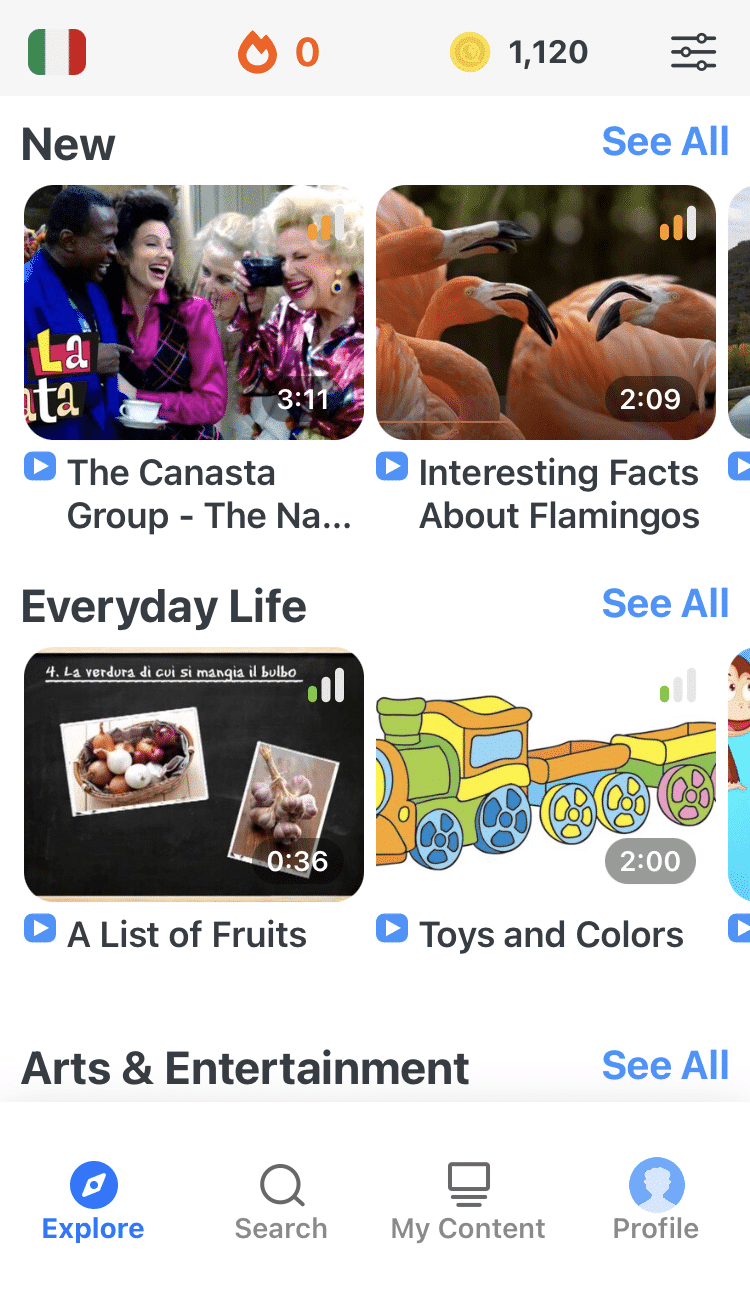
FluentU helps you get comfortable with everyday Italian by combining all the benefits of complete immersion and native-level conversations with interactive subtitles. Tap on any word to instantly see an image, in-context definition, example sentences and other videos in which the word is used.
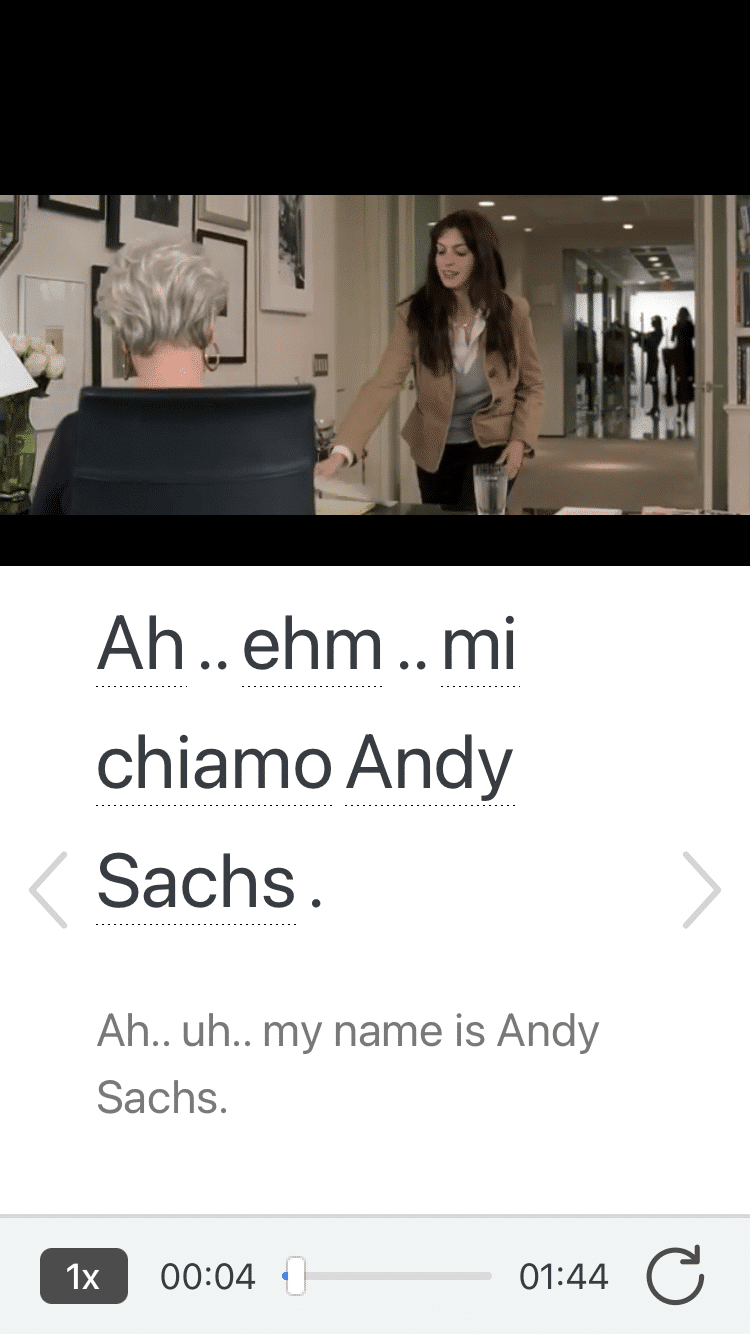
Access a complete interactive transcript of every video under the Dialogue tab, and review words and phrases with convenient audio clips under Vocab.
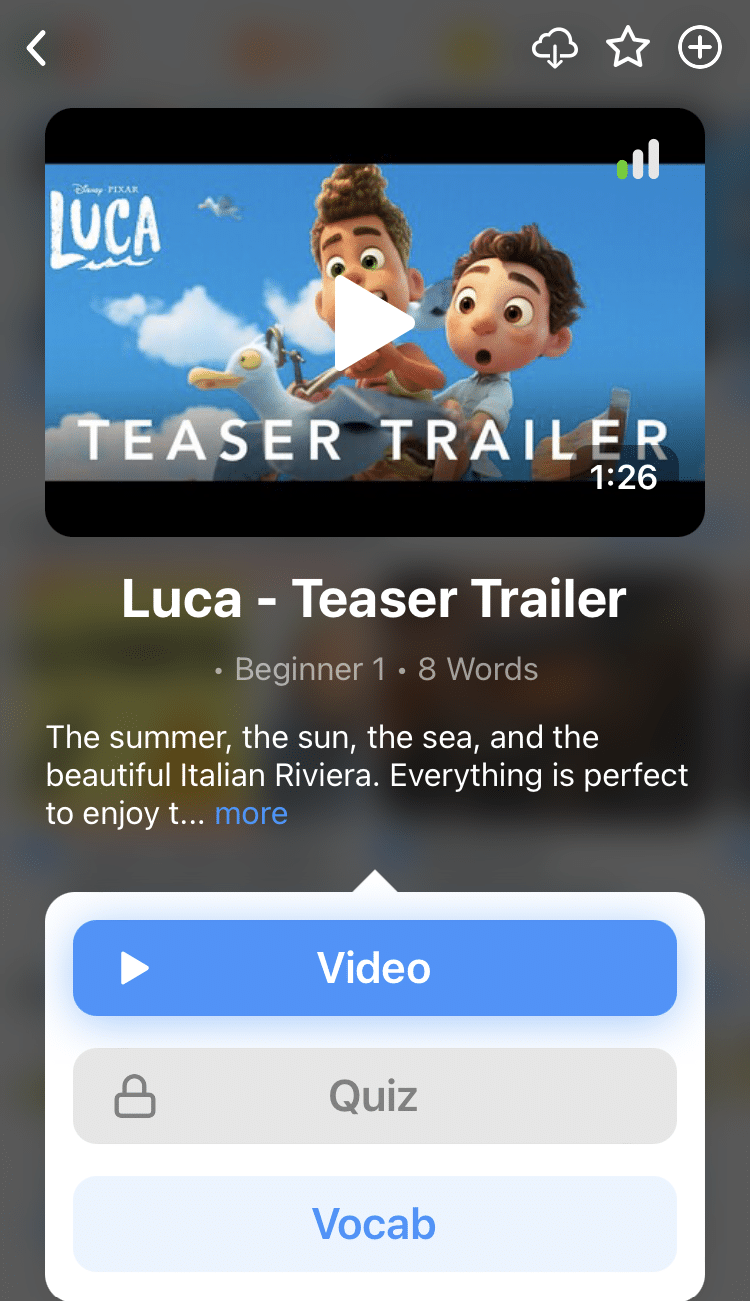
Once you've watched a video, you can use FluentU's quizzes to actively practice all the vocabulary in that video. Swipe left or right to see more examples of the word you’re on.
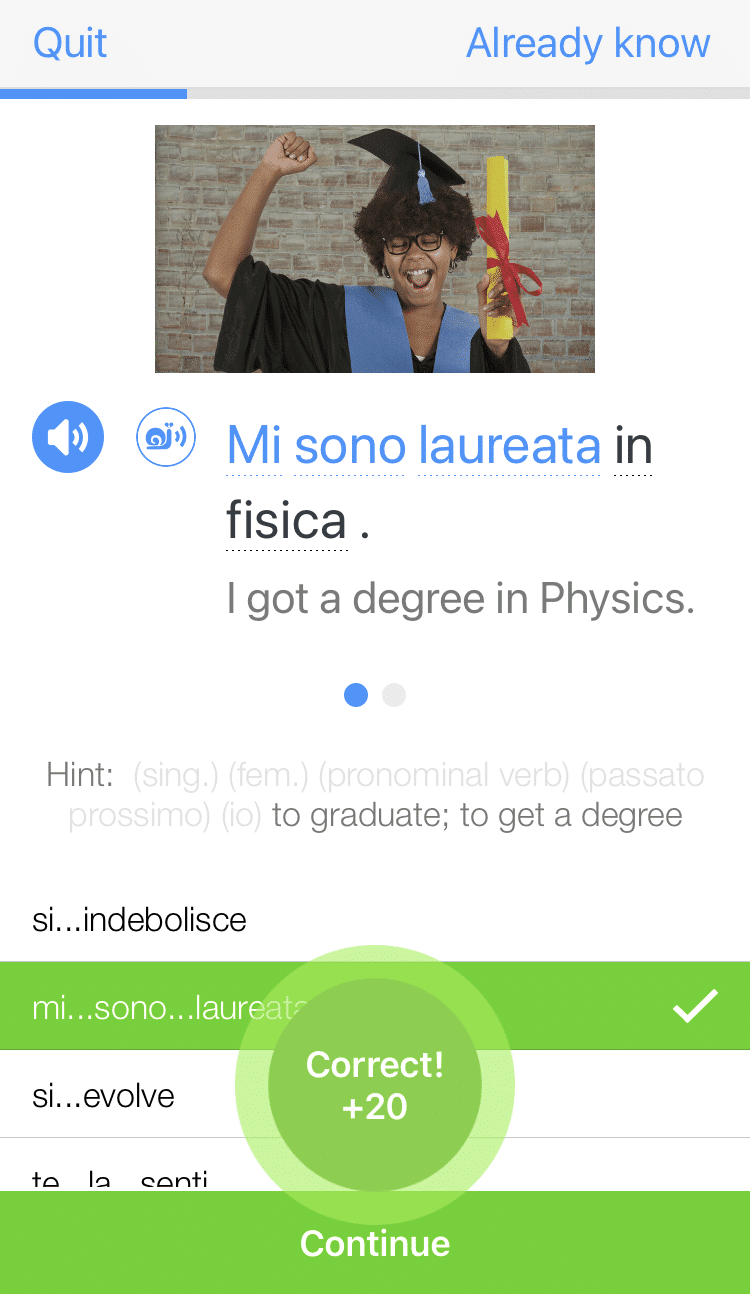
FluentU will even keep track of all the Italian words you’re learning, and give you extra practice with difficult words. Plus, it'll tell you exactly when it's time for review. Now that's a 100% personalized experience!
The best part? You can try FluentU for free with a trial.
Start using the FluentU website on your computer or tablet or, better yet, download the FluentU app from the iTunes or Google Play store. Click here to take advantage of our current sale! (Expires at the end of this month.)



